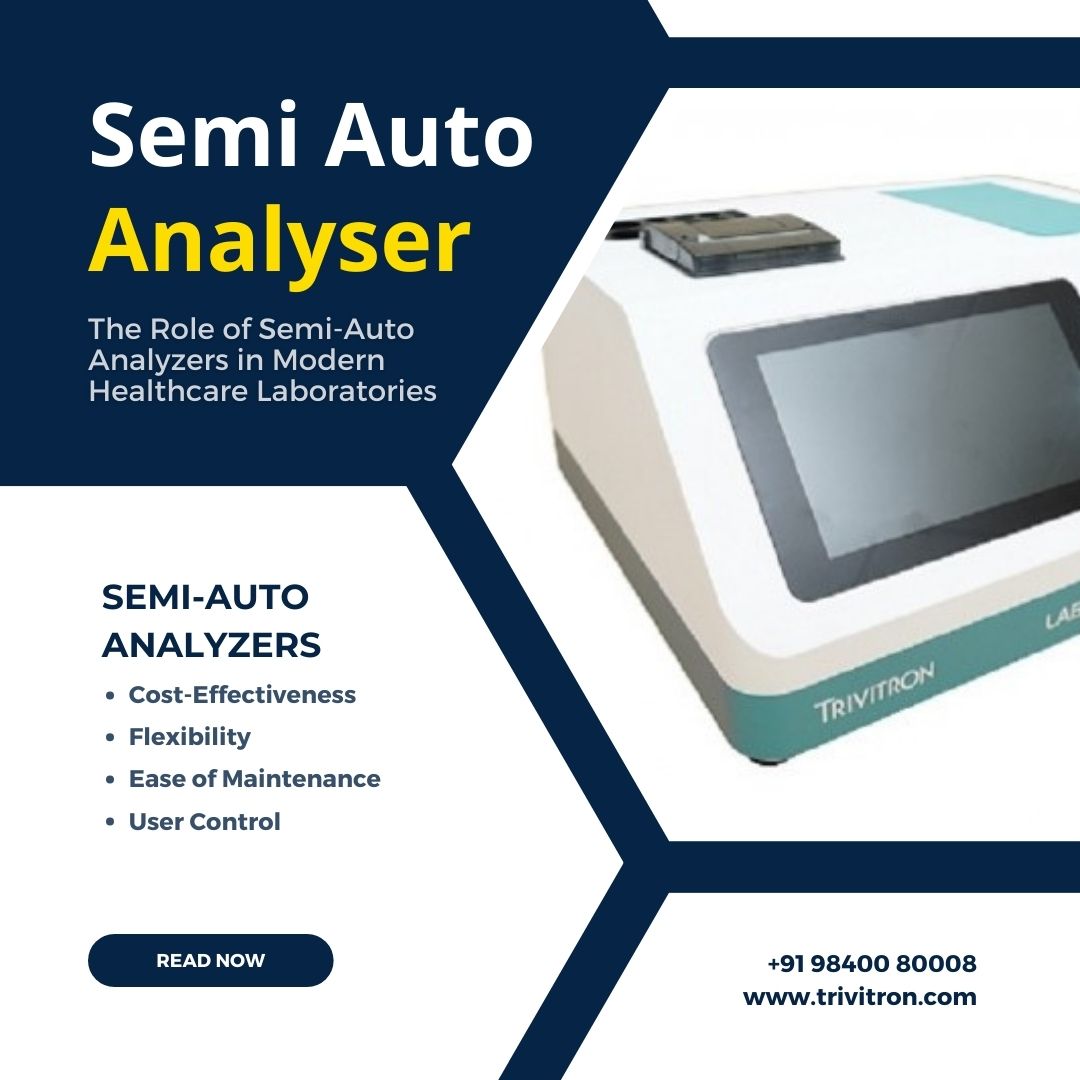Quality control (QC) and quality assurance (QA) are critical in clinical laboratories to ensure accurate and reliable diagnostic tests. As semi-auto analyzers, like Trivitron Healthcare's Semi Auto Analyser, become more prevalent, robust QC and QA practices are essential. This article explores best practices for maintaining high standards with semi-auto analyzers.
Importance of Quality Control and Assurance
QC involves operational techniques to meet quality requirements, while QA includes systematic activities to ensure these requirements are met. Rigorous QC and QA protocols are vital for semi-auto analyzers to ensure test accuracy, detect and correct errors, maintain consistency, and enhance laboratory efficiency.
Best Practices for Quality Control
1. Regular Calibration
- Calibration ensures accurate results. Trivitron’s Semi Auto Analyser should be calibrated regularly according to the manufacturer's guidelines to maintain precision in measuring analytes like proteins, enzymes, and electrolytes.
2. Use of Quality Control Materials
- QC materials that mimic patient samples should be used to monitor the analyzer’s performance continuously. These materials validate the accuracy and reliability of the Semi Auto Analyser.
3. Implementation of Control Charts
- Control charts track the analyzer’s performance over time, identifying trends or deviations for early issue detection and corrective action.
4. Routine Preventive Maintenance
- Regular maintenance, including cleaning and part replacement, ensures optimal analyzer performance, reducing downtime and errors.
5. Staff Training and Competency Assessment
- Continuous training and competency assessments for lab personnel ensure proficiency in using the semi-auto analyzers and adhering to QC protocols.
Best Practices for Quality Assurance
1. Establishing Standard Operating Procedures (SOPs)
- SOPs provide detailed instructions for sample handling, analyzer operation, and QC procedures, ensuring consistency and regulatory compliance.
2. Participation in Proficiency Testing
- External quality assessment programs compare lab results with other labs, identifying improvement areas and demonstrating high standards.
3. Data Management and Documentation
- Accurate records of QC and QA activities support continuous improvement and regulatory compliance.
4. Continuous Improvement
- Regular audits, feedback, and performance reviews help refine laboratory practices using semi-auto analyzers.
5. Compliance with Regulatory Standards
- Adherence to local, national, and international regulations ensures credibility and trust in diagnostic results.
Conclusion
Implementing robust QC and QA practices is essential for the effective use of semi-auto analyzers in clinical laboratories. Trivitron Healthcare's Semi Auto Analyser, with advanced measurement technologies and versatile applications, supports high-quality diagnostics. Regular calibration, preventive maintenance, and compliance with SOPs ensure accuracy and reliability. Continuous improvement and regulatory compliance further enhance diagnostic outcomes, ultimately benefiting patient care. By embracing these best practices, laboratories can maximize the potential of semi-auto analyzers, driving advancements in clinical diagnostics and improving healthcare outcomes globally.





Comments